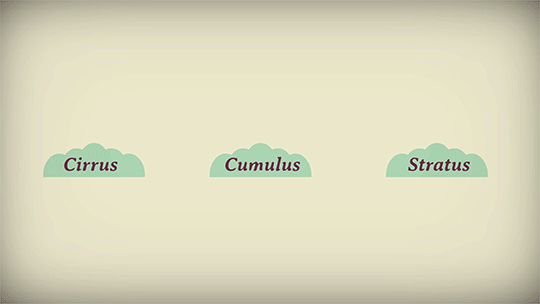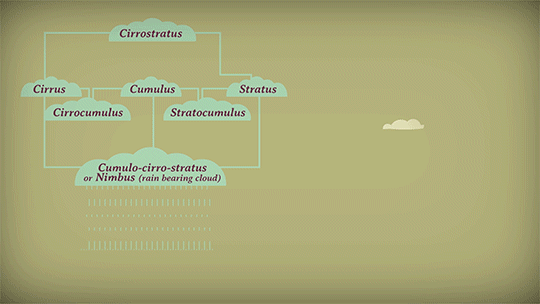The science of clouds (in TED-Ed GIFs)
By Lisa LaBracio on February 24, 2016 in TED-Ed Lessons

The study of clouds has always been a daydreamer’s science, aptly founded by a thoughtful young man whose favorite activity was staring out of the window at the sky. Luke Howard, the man who classified the clouds, forever changed humanity’s understanding of these changeable, mysterious objects. Howard observed that clouds have many individual shapes, but that have few basic forms. In fact, all clouds belong to one of three principle types.

But, clouds are constantly changing, merging, rising, falling, and spreading throughout the atmosphere, rarely maintaining the same shapes for more than a few minutes. Any successful naming system had to accommodate this essential instability. So, in addition to the three main cloud types, he introduced a series of intermediate and compound types, as a way of including the regular transitions that occur among clouds.

Howard identified seven cloud types, but these have since been expanded to ten, cloud nine being the towering cumulonimbus thunder cloud, which is probably why being on cloud nine means to be on top of the world.

Once that had been named and classified, clouds became easier to understand as the visible signs of otherwise invisible atmospheric processes.
From the TED-Ed Lesson: How did clouds get their names?, inspired by this Brainpickings blog post:
Animation by Nick Hilditch/TED-Ed
To learn something new every week, sign up here for the TED-Ed Newsletter.
Tags: Clouds, GIFs, Luke Howard, Richard Hamblyn, Science